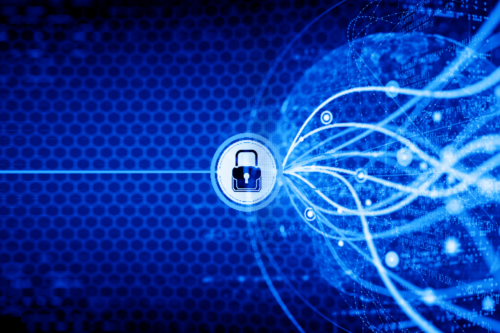Cybersecurity 101 Categories
How Implementing Zero Trust Software Can Improve Your Security Posture
In the digital age, where data breaches are becoming more frequent and devastating, organizations are perpetually seeking innovative ways to protect their sensitive information. One of the most effective strategies to emerge in recent years is zero trust security. Unlike traditional security models that operate on the assumption that everything inside an organization’s network can be trusted, zero trust software operates on a principle of “never trust, always verify.” This means that no one is trusted by default from inside or outside the network, and verification is required from everyone trying to access resources on the network. This added layer of security has been shown to significantly reduce the risk of data breaches, safeguarding an organization’s data, reputation, and bottom line.
The Pillars of Zero Trust Security Framework
The foundational elements of the zero trust security framework are pivotal in establishing a robust defense mechanism for organizations aiming to prevent unauthorized access and mitigate the risk of data breaches. These pillars include:
- Strict Identity Verification: This principle is at the forefront of zero trust, emphasizing the necessity for rigorous authentication and authorization processes for every user and device seeking access to network resources. By ensuring that each entity is accurately identified and vetted, the framework significantly reduces the likelihood of unauthorized access.
- Least-Privilege Access: Central to minimizing the potential damage of a security breach, this pillar advocates for providing users and devices with only the essential privileges needed for their specific roles and functions. This strategy limits the extent of access to sensitive information and systems, thereby containing any potential threats more effectively.
- Micro-Segmentation: By dividing the network into smaller, distinct zones, micro-segmentation enables more granular control over access rights. This division helps in isolating and containing breaches within a specific zone, preventing the spread of threats across the network.
- Device Security Enforcement: Under the zero trust model, all devices must comply with the organization’s security protocols before being allowed to connect to the network. This ensures that only secure, policy-compliant devices can access network resources, reducing the risk of vulnerabilities being exploited.
- Continuous Monitoring and Response: A proactive stance on network security is adopted through constant surveillance of network activity. This enables the immediate detection of suspicious behavior and the swift deployment of countermeasures to address potential threats. This ongoing vigilance is crucial for adapting to new security challenges and maintaining the integrity of the zero trust framework.
What is Application Zero Trust?
Application zero trust zeroes in on the security of applications by integrating the core principles of zero trust into every aspect of application access and interaction. This method demands a meticulous verification process for both users and devices each time an application is accessed, effectively compartmentalizing and securing each application as though it were an isolated fortress. By doing so, it significantly narrows the opportunities for unauthorized entry and mitigates the risk of threat actors navigating laterally within the network, from one application to another. This approach leverages dynamic authentication and rigorous access controls tailored to the unique requirements and sensitivity levels of individual applications. It places a strong emphasis on evaluating the security posture of accessing entities in real-time, ensuring that each session is initiated under the strictest security measures. Application zero trust thereby extends the zero trust philosophy into the granular realm of application security, providing a sophisticated layer of protection that adapts to the complexities of modern application ecosystems. This strategy is particularly pertinent in environments where applications are dispersed across cloud and on-premise infrastructures, requiring a nuanced approach to security that traditional perimeter-based defenses cannot offer. Through application zero trust, organizations can achieve a more refined, application-centric security posture that aligns with the overarching goals of zero trust architecture.
How to Achieve Zero Trust
Embarking on the journey towards a zero trust framework necessitates a well-considered strategy, beginning with a comprehensive assessment of an organization’s current network and security architectures. Identifying where critical data resides, alongside key applications and services, forms the cornerstone of understanding which assets require stringent protection measures. Following this, the deployment of advanced identity and access management (IAM) solutions is paramount. These systems play a critical role in ensuring that access to network resources is strictly limited to verified and authorized users and devices. Incorporating technologies such as multi-factor authentication (MFA), end-to-end encryption, and robust endpoint security further fortifies the organization’s defense mechanisms. These tools not only augment the security posture but also contribute to a layered security approach that is adaptive and responsive to the evolving threat landscape. Another critical step in realizing a zero trust architecture involves the meticulous configuration of network access controls. This includes the adoption of least-privilege access principles and the implementation of micro-segmentation techniques to manage user access rights effectively and limit lateral movement within the network. Moreover, the importance of continuous monitoring cannot be overstated. Leveraging analytics and real-time threat detection systems enables organizations to swiftly identify and respond to anomalous behavior and potential security incidents. This proactive stance on surveillance and response is essential for the dynamic adaptation of security measures to address new and emerging threats. Through these strategic actions, organizations can systematically transition towards a zero trust security model, reinforcing their defenses against unauthorized access and minimizing the risk of data breaches.
Challenges and Considerations in Zero Trust Software Adoption
Adopting a zero trust framework is a forward-thinking strategy for enhancing network security and preventing data breaches. However, organizations face several challenges and considerations during this transition. The complexity of integrating zero trust software into existing infrastructures is one of the foremost hurdles. This process often requires a comprehensive overhaul of current network and security protocols, which can be both time-consuming and expensive. Ensuring a seamless integration without disrupting day-to-day operations necessitates meticulous planning and execution. Another significant challenge lies in the cultural shift required for zero trust adoption. The success of a zero trust model depends heavily on the buy-in from all stakeholders, including management and staff. This requires a fundamental change in how security and access are perceived within the organization. Stakeholders must move away from the traditional mindset of implicit trust based on network location, to a culture of continuous verification and minimal privilege access. Furthermore, the dynamic nature of cyber threats and the evolving landscape of network security mean that zero trust is not a set-it-and-forget-it solution. Ongoing education and training on the latest security threats, zero trust best practices, and technological updates are crucial for maintaining the effectiveness of zero trust defenses. Organizations must commit to regular reviews and updates of their security policies and practices to ensure they remain aligned with the principles of zero trust security. In sum, while the adoption of zero trust can significantly enhance an organization’s security posture, it requires careful consideration of the technological, cultural, and operational changes necessary for successful implementation. Organizations must be prepared for the investment in time, resources, and continuous learning to overcome these challenges and fully realize the benefits of a zero trust security model.



